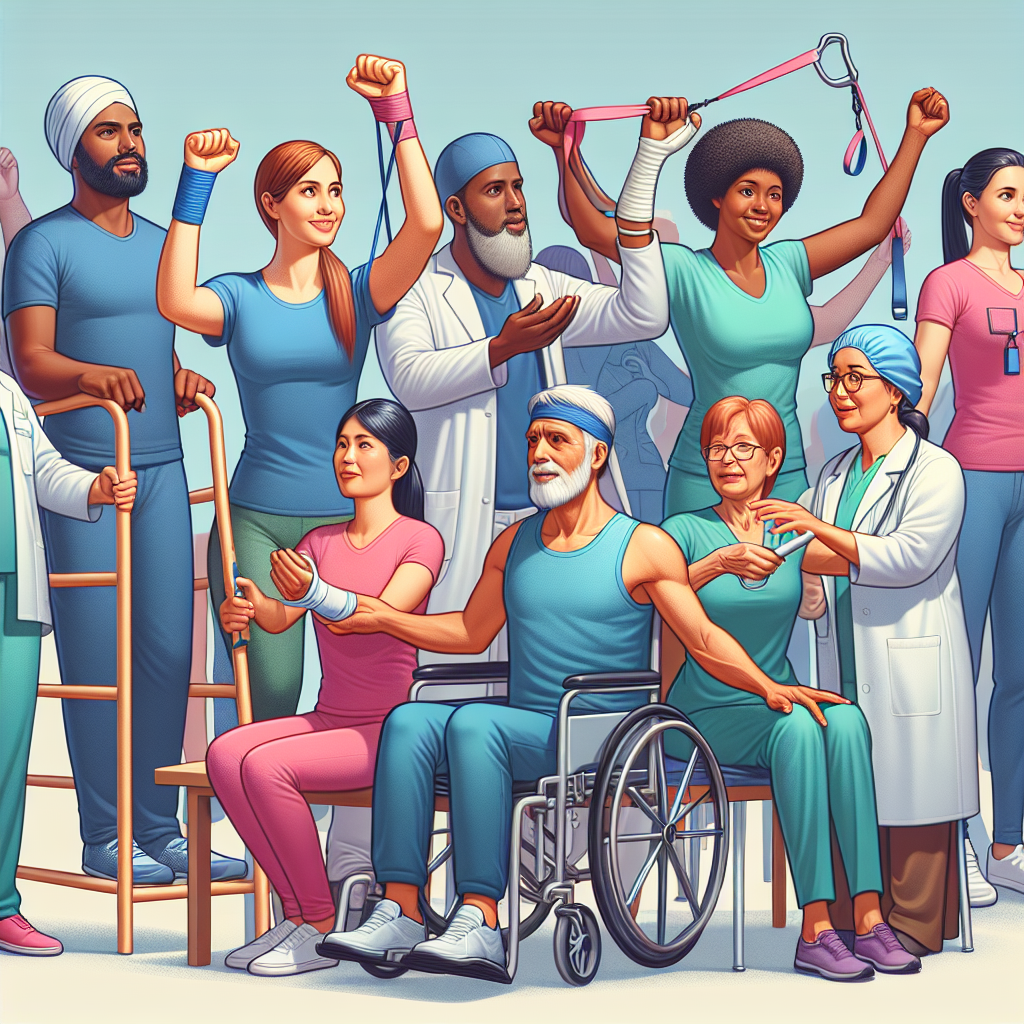Understanding Workers’ Compensation
Basics of Workers’ Compensation
Workers’ Compensation is a type of insurance that provides coverage for employees who become injured or ill as a direct result of their work-related duties. This insurance program, mandated by law across the United States, also offers death benefits to dependents of workers who have died due to job-related accidents or illnesses.
The primary aim of workers’ compensation is to ensure injured employees receive appropriate medical care and compensation for lost wages due to inability to work until recovery. While policies may vary from state to state, all are designed to protect both the employer and the employee.
Key Elements of Workers’ Compensation
There are a few key elements to understanding workers’ compensation. Firstly, it is a no-fault system, meaning that benefits are provided regardless of who is to blame for the accident or illness. Next, it is an exclusive remedy which means, in most cases, employees cannot sue their employers for workplace injuries if they receive workers’ compensation benefits.
Following an injury, the compensation process is initiated when the employee reports the incident to their employer. The compensation should ideally cover all relevant medical expenses, including examinations, treatments, medications, and rehabilitation costs. Depending on the nature and extent of the injury, the worker may also be compensated for lost wages during the recovery period.
The Role of Rehabilitation and Retraining in Workers’ Compensation
A crucial component of workers’ compensation is rehabilitation and retraining support. If an injury or illness results in long-term or permanent disability that affects the employee’s ability to perform their previous job duties, the workers’ compensation program typically covers vocational rehabilitation services.
These services can include career counseling, job retraining, job modification, therapeutic work programs, and sometimes even education tuition. The goal of these rehabilitation services is to help the injured worker return to the workforce in a capacity that accomodates their post-injury abilities and skills. Different states have specific regulations about the extent and availability of these rehabilitation services in workers’ compensation, which highlights the importance of understanding your particular state’s laws.
Rehabilitation: The Road to Recovery
Understanding Rehabilitation in Worker’s Comp
The rehabilitation process in the context of workers’ compensation involves various interventions aiming at helping injured or sick employees regain their health and return to work. This process is inherently multi-disciplinary, involving professionals from different fields like medicine, psychology, physiotherapy, occupational therapy, and more. The key goal is not just physical recovery, but also the psychological readiness and capacity to get back to the workplace.
Stages of Rehabilitation
The first stage of rehabilitation is usually acute care, where immediate medical help is provided to stabilize the condition of the worker. Once stable, the worker enters the next phase known as early intervention. In this stage, small steps are taken towards regaining function and independence. Following this is the active rehabilitation period, where individualized plans involving therapies and exercises are implemented, focused on returning the worker to full functionality or the highest possible level of self-sufficiency.
The final stage is return-to-work, which may involve light duties or modified tasks initially, gradually increasing in complexity and load until the worker is able to resume their normal duties. It’s important to understand that each case is unique and timelines can vary vastly, depending on the nature and severity of the injury or illness.
Vocational Retraining
In some cases, returning to the previous job may not be feasible due to the extent of disability or the physical demands of the original work. In such scenarios, vocational retraining comes into the picture. This aspect of rehabilitation aids the employee in acquiring new skills or improving existing ones to allow for alternative employment. Career counselling, on-the-job training, formal education, and other similar services may be offered during vocational retraining.
Remember, the essence of workers’ compensation rehabilitation is to ensure a smooth transition from illness or injury back to gainful employment, while preserving the worker’s dignity and self-esteem throughout the journey. It’s an integral part of the social safety net designed to protect workers and their livelihoods.
Retraining: Acquiring New Skills for a Safe Return to Work
Understanding the Need for Retraining
When an individual suffers a debilitating injury at work that prevents them from returning to their previous role, retraining becomes crucial. The goal of retraining is to equip workers with new skills and knowledge to help them return to the workforce as quickly as possible. The need for retraining may arise from a permanent disability or a significant change in the worker’s physical abilities. It could be aimed at teaching the person how to use assistive equipment, acquire new technical skills, or even transition into a completely different profession.
Building Transferable Skills
A key aspect of retraining involves building transferable skills. These are skills and abilities that can be applied across a variety of job roles and industries. Developing strong communication skills, problem-solving abilities, basic IT skills, and managerial capabilities can make a huge difference when adapting to a new work environment. The training should also focus on foundational skills that form the basis of most professional roles, such as reading, writing, and arithmetic.
Adapting to New Technology
In today’s increasingly digital world, learning to work with new technology forms a significant part of retraining programs. Many jobs now require at least a basic understanding of various software tools, databases, and cybersecurity practices. Adaptation to new technology could involve anything from learning to use a new piece of machinery at a factory to mastering coding languages for a role in software development. Therefore, customized training programs to meet the unique needs of each worker are essential.
Workplace Accommodations and Support
As part of retraining, it’s important to ensure that the workplace offers adequate accommodations and support for the returning worker. This includes physical modifications to the workspace, if needed, equipment adaption, flexible work hours, and mental health support. Employers also need to provide a supportive and inclusive environment that encourages continuous learning and skill adaptation.
Retraining is a significant step in ensuring that injured workers are given the opportunity to continue their professional lives. While it can be challenging, it is an essential part of recovery and returning to work safely and effectively.
Support Systems in Workers’ Compensation Programs
In a comprehensive approach to workers’ compensation programs, several support systems play crucial roles in ensuring the injured worker’s successful rehabilitation and retraining. These systems are instrumental in assisting employees as they journey through recovery until they can resume work duties fully.
Medical Support
The medical support forms the backbone for any recovery process after an injury. It begins immediately after a workplace incident with urgent care, and it continues through ongoing treatments like physical therapy, surgeries or medication management. Workers’ compensation programs often provide full coverage for this essential stage, lessening financial stress and aiding faster recovery.
Physical Rehabilitation Services
Beyond initial medical treatment, physical rehabilitation services assume a pivotal function in the workers’ compensation framework. These services typically feature physiotherapy, occupational therapy, and other relevant therapies that help an employee regain physical functionality lost due to injury. Trained professionals employ various strategies and techniques to enhance muscle strength, flexibility, and overall functional mobility, preparing the worker to return to their job.
Vocational Retraining and Career Assistance
If an employee cannot return to their previous job due to the nature of the injury, vocational retraining becomes necessary. Workers’ compensation programs provide resources and support for this retraining, often in partnership with vocational rehabilitation counselors. They assess the worker’s skills, interests, and capabilities and develop a plan to train them for a new role within their physical restrictions. Additionally, career assistance in areas like resume building, job hunting, and interview practice can be provided, helping the worker transition into a new line of work.
Psychological Support
Workers’ compensation programs also recognize the mental impact of a workplace injury. To this end, they often incorporate psychological support to help deal with trauma, anxiety, depression, or any other mental health challenges exacerbated by the incident. This support can take various forms, like counseling, therapy sessions, or mental health workshops, promoting a comprehensive approach to recovery.
Success Stories: From Injury to Employment through Rehabilitation and Retraining
John: Recovery and Retraining After a Construction Accident
John, an experienced construction worker, experienced a life changing accident when a scaffolding collapsed, leading to significant damage to his lower limbs. After a series of extensive surgeries, it was clear that returning to his previous job was not an option. With the assistance of his workers’ compensation benefits, John embarked on a rehabilitation journey with physiotherapy at the core of it.
Once physically capable, he opted for a retraining program in construction project management. The course was mostly theoretical, allowing him to leverage his practical knowledge while accommodating his physical limitations. Today, John is successfully managing large construction projects, ensuring safety protocols are strictly adhered to, with a unique perspective born out of his personal experience.
Maria: From Factory Worker to Office Assistant
Maria’s case is another testament to the effectiveness of rehabilitation and retraining programs. She was employed as a factory laborer for several years until a machine malfunction resulted in severe hand trauma. It was uncertain if Maria would regain full use of her hand post-surgery.
As part of her recovery plan, she attended physical therapy sessions funded by her workers’ comp benefits. Concurrently, Maria enrolled in a vocational course for administrative skills. Upon completion, she secured a job as an office assistant. Despite the initial challenges, Maria now excels in her role, proving that change, even when enforced, can lead to discoveries of new abilities and interests.
Anthony: A Successful Shift from Physical Labor to IT
Anthony’s story revolves around a severe back injury from heavy lifting during his warehouse employment. Post-surgery, his doctor recommended a shift away from physically demanding jobs. Feeling disoriented at first, Anthony found hope in a retraining program through his workers’ comp support.
Always having an interest in technology, Anthony pursued a course in IT support. Over time, he honed his skills and developed a deep understanding of the field. He is now a thriving IT Specialist in a leading tech company, thanks to the vocational training he obtained during the most challenging phase of his life. These stories all bear the mark of resilience, hope, and the transformative power of rehabilitation and retraining.



